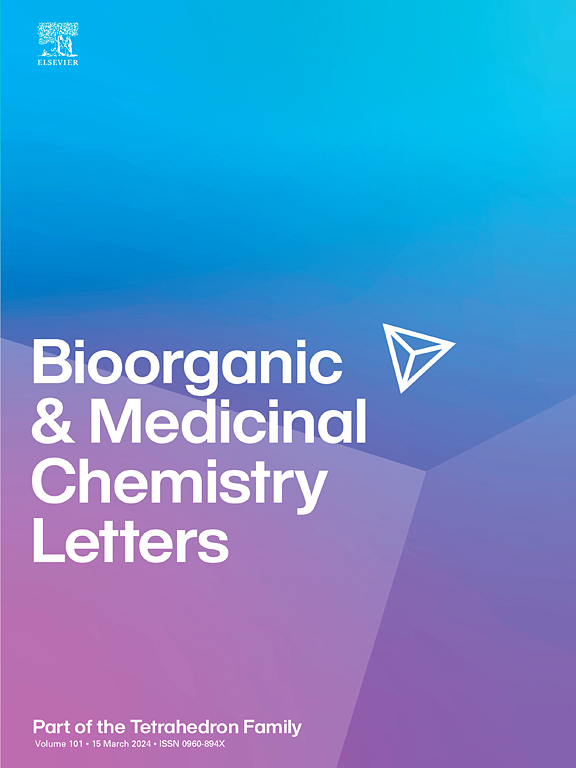新型丙酮酸激酶M2抑制剂n -甲基胍衍生物的发现
IF 2.5
4区 医学
Q3 CHEMISTRY, MEDICINAL
引用次数: 0
摘要
肺癌是癌症相关死亡的主要原因,非小细胞肺癌(NSCLC)占所有病例的80 - 85%。因此,尽管具有挑战性,但探索新的非小细胞肺癌治疗药物是非常可取的。丙酮酸激酶M2 (PKM2)与NSCLC的疾病进展和转移密切相关,使其成为一个有希望的治疗靶点。在此,我们报告了一系列n -甲基胍衍生物的发现,这些衍生物显示出有效的PKM2抑制活性。特别是,N′-菲罗啉取代的N-甲基胍表现出明显的PKM2抑制作用。进一步实验表明,化合物16对A549和HCC1833 NSCLC细胞株具有良好的抑制作用,IC50值分别为3.36 μM和9.20 μM。体内抗肿瘤研究进一步表明,化合物16能显著抑制人源性NSCLC模型和小鼠肺腺癌模型的肿瘤生长。基于这些发现,我们提出N ' -菲罗啉取代的N-甲基胍16作为一种有前景的新型PKM2抑制剂,具有潜在的治疗应用前景。本文章由计算机程序翻译,如有差异,请以英文原文为准。

Discovery of N-methylguanidine derivatives as a new type of potent pyruvate kinase M2 inhibitor
Lung cancer is the leading cause of cancer-related mortality, with non-small cell lung cancer (NSCLC) accounting for 80–85 % of all cases. Thus, while challenging, the exploration of novel therapeutic agents for NSCLC treatment is highly desirable. Pyruvate kinase M2 (PKM2) has been closely associated with disease progression and metastasis in NSCLC, making it a promising therapeutic target. Herein, we report the discovery of a series of N-methylguanidine derivatives that demonstrated potent PKM2 inhibitory activity. In particular, N′-phenanthroline-substituted N-methyl guanidine exhibited notable PKM2 inhibition. Further testing demonstrated that compound 16 exhibited excellent inhibitory effects on A549 and HCC1833 NSCLC cell lines, with IC50 values of 3.36 μM and 9.20 μM, respectively. In vivo antitumor studies further showed that compound 16 significantly inhibited tumor growth in human-derived NSCLC models and mouse lung adenocarcinoma models. Based on these findings, we propose N′-phenanthroline-substituted N-methylguanidine 16 as a promising novel PKM2 inhibitor with potential therapeutic applications for NSCLC.
求助全文
通过发布文献求助,成功后即可免费获取论文全文。
去求助
来源期刊
CiteScore
5.70
自引率
3.70%
发文量
463
审稿时长
27 days
期刊介绍:
Bioorganic & Medicinal Chemistry Letters presents preliminary experimental or theoretical research results of outstanding significance and timeliness on all aspects of science at the interface of chemistry and biology and on major advances in drug design and development. The journal publishes articles in the form of communications reporting experimental or theoretical results of special interest, and strives to provide maximum dissemination to a large, international audience.

 求助内容:
求助内容: 应助结果提醒方式:
应助结果提醒方式:


